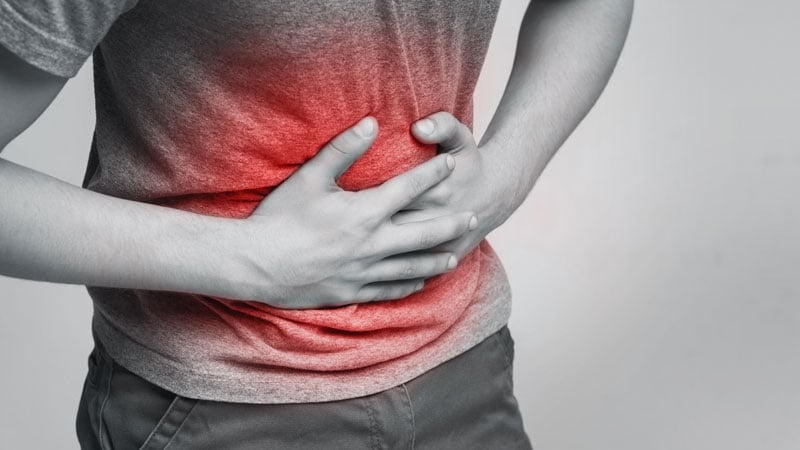This article was originally published in German on Univadis.
Core Messages
Lead is used as a diluting agent for illegal drugs such as heroin and marijuana. However, drug users are not the only ones who need to watch out for the toxic heavy metal ― believers in certain traditional remedies do as well. The case history of a young man, as related by Victor Suárez, MD, and his colleagues from the University Hospital of Cologne, Germany, which was published in the German Medical Weekly, illustrates this point.
Presentation and History
The 24-year-old man came to the emergency department because of crampy lower abdominal pain and poor performance status, according to the authors. Investigations that were conducted during a previous inpatient hospital stay had not yielded any indicative findings. The patient had no preexisting conditions other than previous cocaine and cannabis abuse. When asked, the patient reported that he had received an Indian (Ayurvedic) remedy from a friend. He had been taking two capsules of it each day for about a month.
Findings
-
Patient in reduced general condition but with normal nutritional status
-
Normal vital signs
-
Diffuse abdominal pressure pain
-
Pale gray skin color and slight gingival gums on the edges
-
No evidence of a focal neurologic deficit
-
Elevated liver enzyme and lipase levels
-
Normocytic, normochromic anemia
-
No vitamin B12, folic acid, or iron l deficiency
-
Normal kidney function
-
Elevated ferritin level (671 μg/L)
-
Abdominal ultrasonography and CT without additional findings
-
Testing for heavy metals: significantly elevated blood levels of lead (70 μg/dL; normal value, <5 μg/dL)
-
Elevated urine levels of δ-aminolevulinic acid (42 mg/L; normal value, <4.5 mg/L)
-
Peripheral blood smear: basophilic spotting of erythrocytes
-
Lead also detected in the hair (12.1 μg/g)
According to the authors, the analysis of the capsules taken by the patient revealed that there was 34 mg of lead per two capsules. This corresponds to about 136 times the permissible dose.
Therapy and Course
The patient received chelation therapy (250 mg of dimercaptopropane sulfonate [DMPS] intravenously every 4 hours). The dose was gradually reduced, and the patient was switched to oral administration after 4 days (DMPS 100 mg 3x daily p.o.). The patient’s blood level of lead dropped from 70 μg/dL initially to 57 μg/dL after 5 days on this therapy, according to the authors. The symptoms regressed, and the patient was discharged in good general condition. During a follow-up examination after 3.5 months, the patient was symptom free and in very good general condition. The blood level of lead was 30 μg/dL. The hemoglobin level and levels of liver enzymes and lipase were normal.
Discussion and Recommendations
Suárez and his colleagues report that lead exposure in the population has steadily declined since the 1980s, owing to the ban on lead-based paint and the switch to unleaded gasoline. What is less well known is that drugs and traditional natural remedies that are contaminated with lead can also cause lead poisoning. Around 20% of Ayurvedic remedies contained at least one heavy metal at a potentially toxic dose. Of these medicines, lead was the heavy metal most often detected.
Symptoms of lead poisoning are nonspecific. Initially, patients often have abdominal discomfort (“lead colic”), and there are often changes in the blood count. A thorough study of the patient’s history with regard to occupation, living situation, hobbies, medications — including alternative medicine and drug use — is a key part of the diagnostic process. A suspicion of lead poisoning warrants determining the blood lead level and δ-aminolevulinic acid in the urine.
For more news, follow Medscape on Facebook, Twitter, Instagram, and YouTube.
Source: Read Full Article
